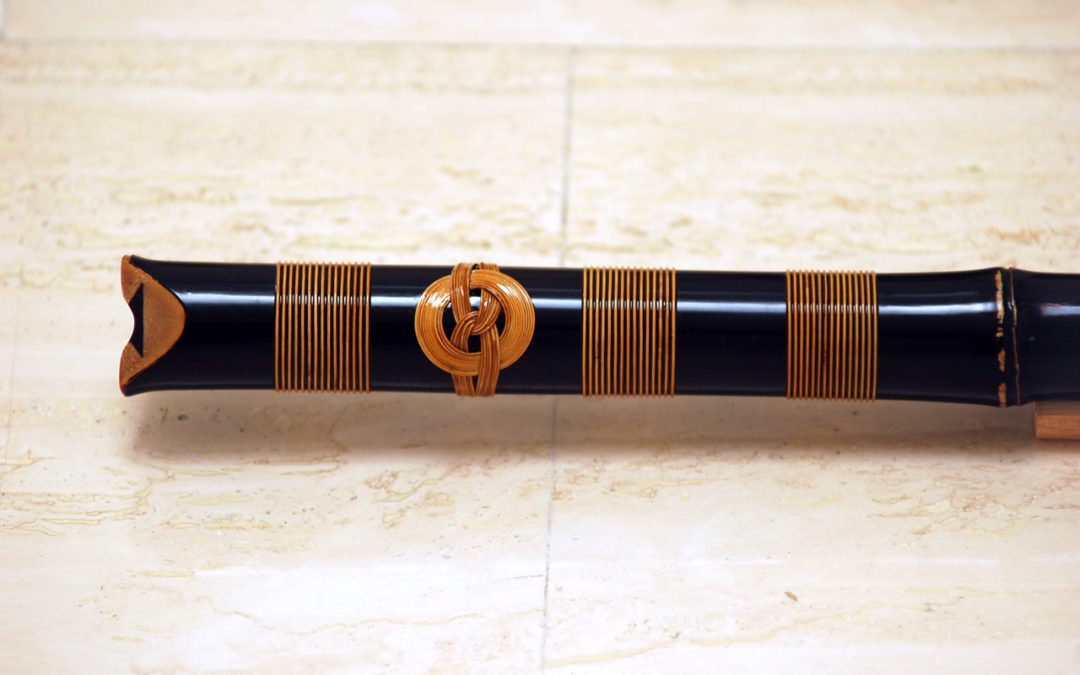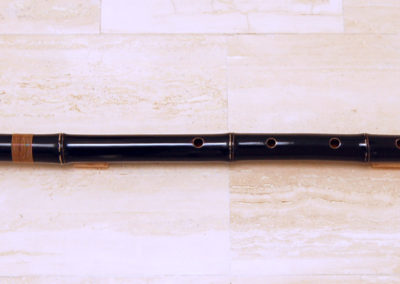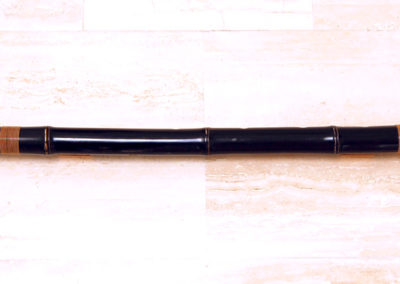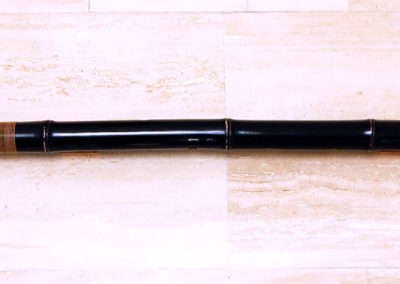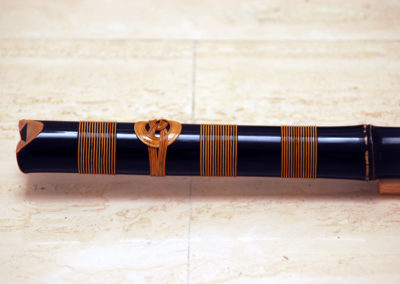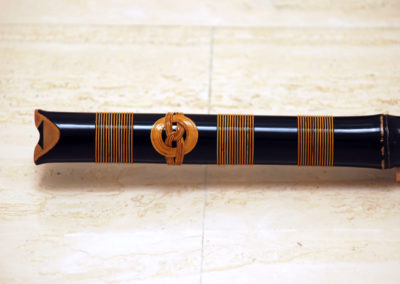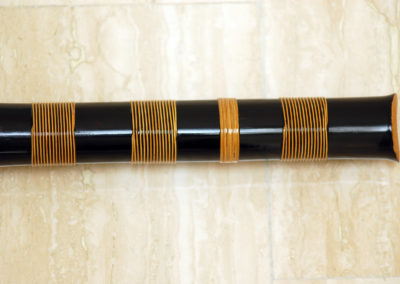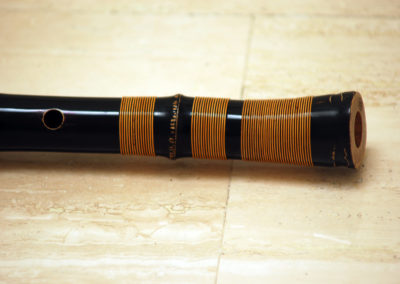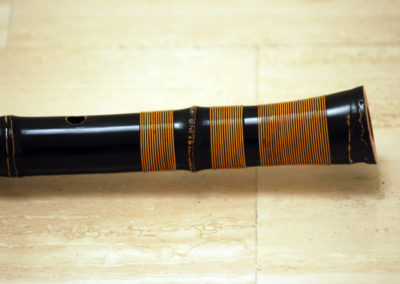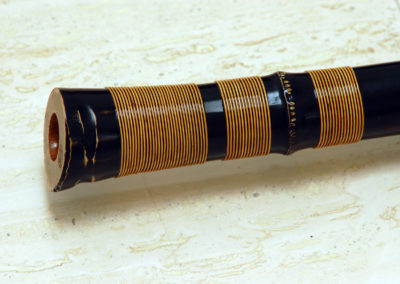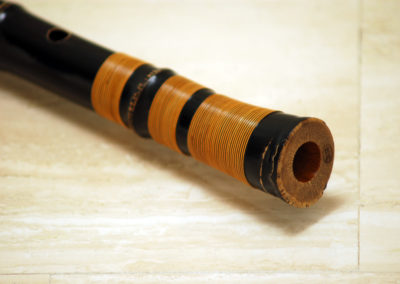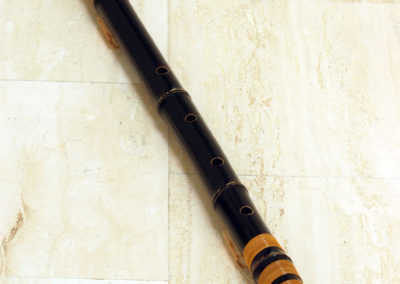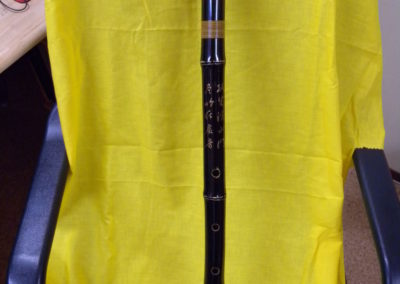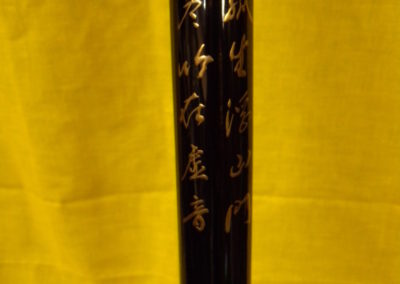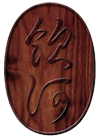2012: I have always loved the worn, antiqued, black Komuso aesthetic, so I approached this flute with that in mind, having a wonderful piece of Chinese madake on hand. This is one of those rare jinashi shakuhachi that just “comes together” with an ideal bore profile and a painless workflow; nature was kind and very little spot ji work was necessary.
It is a highly responsive, wonderful instrument with a wide timbre sculpting range. Plays easily to 4th octave ro with excellent balance, a pronounced chikuin, and a solid, warm and woody tone. It is a 79.5cm 2.62, pitched at A450 / G2 ro (a little closer to a 2.5). Tuning is excellent. Kinko utaguchi, hand-polished / antiqued Japanese cashew lacquer exterior, lacquered decorative rattan bindings.
“Obscure” audio samples of this flute at the bottom of this page.
Update 4/12/12: With the help of the always gracious Jeff Cairns, this shakuhachi was sent to the renowned artist Yamazaki Mushu for some “maki-e” (gold+urushi artwork) to be added just above #4. When I came up with the concept for the kanji I wanted painted on the shakuhachi, I sent it to a friend and haiku expert / author Richard Gilbert, in Kumamoto, Japan. He then collaborated with fellow haiku expert, Yuki Ito, to compose the poem in an ancient reading style known as “kanbun”. That poem was then put to paper by the highly skilled calligrapher Reiko Nogami sensei, which was then sent to Mushu as a basis for the maki-e.
Since the flute was shipped from Japan to its new owner, I was unable to take new pics. I have added 2 images at the bottom of this page that were emailed to me after the work was completed.
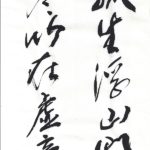 One interpretation of the poem:
One interpretation of the poem:
A solitary life, cloud-topped
past the mountain gate wandering
through winter bamboo
the emptiness of sound

